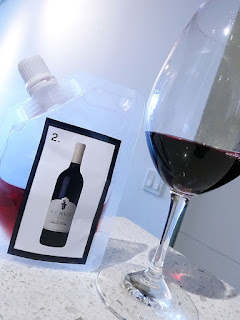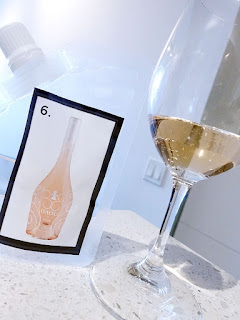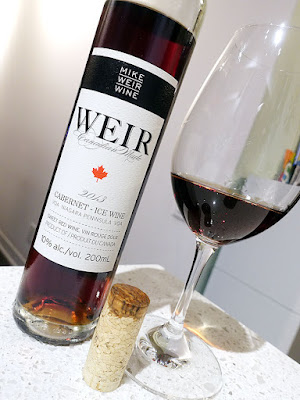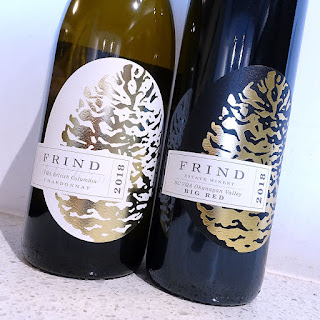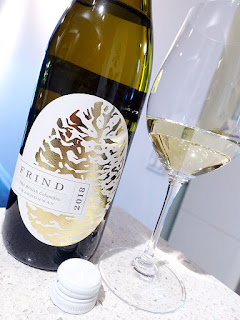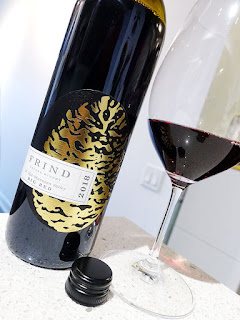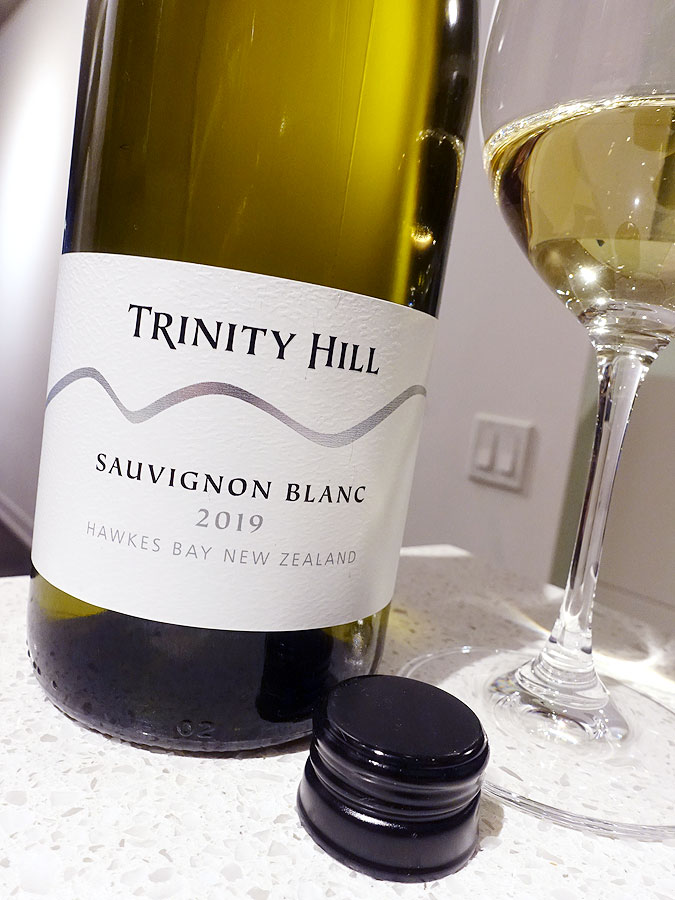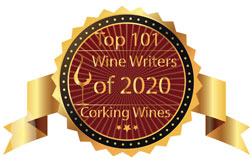Last month was California Wine Month and I had the pleasure of attending a virtual zoom Master Class on "Emerging California". This master class was put on by California Wines and led by leading wine critic, journalist, and educator Elaine Chukan Brown.
Winegrowing activities in California began in the mid-1800's. Since that time, California has emerged as one of the world's great wine producing regions most notable for its Cabernet Sauvignon, Pinot Noir, and Chardonnay from Napa Valley and Sonoma County. In this master class, which included 9 wine samples for us to taste along with Elaine, we learned about some of California's lesser-known wine regions, focusing mainly on areas in the Central Coast.
The wines were, for the most part, made with grape varieties one wouldn't normally associate with California - Grenache, Cabernet Franc, Chenin Blanc, and Sauvignon Blanc were just some of the varietals we touched upon. Overall, I found the master class to be quite informative as a wealth of information was presented by Elaine. I was also very pleased with the quality of the wines. In the end, the Chardonnay and Cabernet Sauvignon were my definitive favourites, but there were also many other lovely wines. To purchase any of these wines, please contact each wine's Agent for availability and pricing as only a very small amount of the rosé is currently available at the LCBO.
Primarily from Monterey, this blend of 42% Grenache, 31% Cinsault, 24% Syrah, 2% Petit Verdot, and 1% Counoise has a medium-high to highly aromatic nose that is fresh, ripe, plummy, red fruited with a subtle smokiness. It’s medium-full bodied with smooth, nicely textured tannins. Flavours are dry and nicely balanced with red fruits, currant, red cherry, and subtle wood. Fresh, balanced acids. Long, red fruited, cherry, and smoky finish. Agent: FWM Canada. Score: 90 pts
SCHUG CABERNET FRANC 2017 - Sonoma County, California, USA (XD) - $47 USD
Blend of 78% Cabernet Franc, 14% Cabernet Sauvignon, 7% Merlot, and 1% Petit Verdot. The lovely, medium-high to highly aromatic nose offers aromas of currant, cassis, red pepper, pretty florals, and herbaceous touches. It’s medium-full bodied and dry with lovely aroma replays with noted red pepper and smoky touches, along with tangy, juicy acidity. Structured and smooth with fine tannins. Red pepper, currant, and chocolate notes linger on the long, juicy finish. Agent: Lifford Wine and Spirits. Score: 91 pts
RIDGE ESTATE CABERNET SAUVIGNON 2019 - Monte Bello Vineyard, Santa Cruz Mountains, Central Coast, California, USA (#89284) (XD) - $112 CAD
Composed of 88% Cabernet Sauvignon, 11% Merlot, and 1% Petit Verdot, it has a lovely, highly aromatic nose featuring aromas of sweet cassis, floral, currant, red berry fruit, cherry, and sweet spices. It’s full-bodied, dry, and structured with elegant, slightly chalky tannins along with lovely aroma replays and fresh, tangy acidity lifting the palate. Red cherry, floral, and earthy with some stony mineral notes lingering on the very long, juicy finish. Agent: Rogers & Company. Score: 93 pts
CLINE ANCIENT VINES CARIGNANE 2019 - Contra Costa County, Central Coast, California, USA (#32177) (XD) - $33 CAD
From old vines, some more than 100 years old, grown in sandy soils in northwest Oakley near the San Joaquin River, the medium-high to highly aromatic nose offers lovely purple and black fruit, dark plum, and minty herbal aromas. It’s full-bodied with structured, slightly chalky tannins with lovely aroma replays on the flavour profile. Juicy acids with minty, dark berry notes, plus touches of smoke linger on the long finish. Agent: Vinexx. Score: 91 pts
OAK RIDGE MAGGIO PETITE SIRAH 2020 - Lodi, California, USA (D) - $12 USD
A blend of 90% Petite Sirah and 10% Zinfandel, the medium-high nose is very ripe, plummy, and fruit forward with dark berry and sweet oak aromas. The fleshy, full-bodied palate is juicy and fruit forward, dark berry, plum, tea leaf, and purple fruit flavours joined by subtle sweet spices and vanilla. Structured tannins have some grip. Juicy acids and ripe plum and berry notes linger on the finish, with very good length. Agent: Profile Wine Group. Score: 87 pts
DAOU DISCOVERY ROSÉ 2020 - Paso Robles, Central Coast, California, USA (#19527) (XD) - $29.95 CAD
This blend of 95% Grenache grown on limestone soils, plus 5% Sauvignon Blanc was barrel-aged on its lees. Aromas are fresh and bright with notions of grapefruit, citrus, and red berries, with herbally touches. It’s medium-bodied and dry with a pleasingly chalky textured mouthfeel to go along with very nice aroma replays on the palate, joined by touches of grassy notes. Somewhat fleshy on the mid-palate. Very good length on the slightly leesy finish. Only 10 bottles remain at LCBO, and at a big discount. Agent: Southern Glazer's Wine and Spirits of Canada. Score: 90 pts
INGLENOOK SAUVIGNON BLANC 2019 - Rutherford, Napa Valley, California, USA (#17090) (XD) - $38 USD
A blend of 76% Sauvignon Blanc and 24% Semillon that was aged for 8 months sur lie with 70% in stainless steel tanks, 19% in new French oak, and the rest in neutral French oak. The elegant, medium-high intensity nose is earthy-leesy in profile with pear, stone fruit, white peach, citrus, lemongrass, and herbs. On the medium+ bodied palate it is very textural and rich with pear, citrus, lemongrass, and white peach replays supported by juicy, balanced acidity. Citrus, pear, and subtle spices linger on the long, crisp, and tight finish. Agent: Noble Estates Wine & Spirits. Score: 91+ pts
BOGLE CHENIN BLANC 2020 - Clarksburg, California, USA (#704049) (D) - $21.95 CAD
Chenin Blanc is the most widely planted variety in the Clarksburg AVA, which has mostly alluvial soils mixed with clay and some sand. This Chenin has muted aromas of tropical fruit, honeyed, beeswax, floral, and honeysuckle. It’s medium-full bodied with appealing, off-dry aroma replays joined by spice notes. It has a viscous mouthfeel with lively acids, subtly spicy and tapering to a dry-ish, crisp finish, with very good length. Agent: Abcon Wine Merchants. Score: 88 pts
CALERA MT. HARLAN CHARDONNAY 2018 - Certified Organic Farmed Vineyards, Central Coast, California, USA (#16406) (XD) - $55 USD
Grown in limestone soils in the Gavilan Mountains at a high elevation of 2,200 feet and cooled by ocean breezes. The gorgeous, highly aromatic nose is rich and buttery with apple, pear, stone fruits, lemon citrus, and subtle smokiness aromas. It’s medium-full to full bodied with a lovely, rich, creamy mouthfeel and very nice, flavourful aroma replays, plus elegant oak spice and vanilla notes, all framed by lovely, racy acidity. Excellent length on the long, dry, leesy mineral finish. Agent: Rogers & Company. Score: 94 pts
Winegrowing activities in California began in the mid-1800's. Since that time, California has emerged as one of the world's great wine producing regions most notable for its Cabernet Sauvignon, Pinot Noir, and Chardonnay from Napa Valley and Sonoma County. In this master class, which included 9 wine samples for us to taste along with Elaine, we learned about some of California's lesser-known wine regions, focusing mainly on areas in the Central Coast.
The wines were, for the most part, made with grape varieties one wouldn't normally associate with California - Grenache, Cabernet Franc, Chenin Blanc, and Sauvignon Blanc were just some of the varietals we touched upon. Overall, I found the master class to be quite informative as a wealth of information was presented by Elaine. I was also very pleased with the quality of the wines. In the end, the Chardonnay and Cabernet Sauvignon were my definitive favourites, but there were also many other lovely wines. To purchase any of these wines, please contact each wine's Agent for availability and pricing as only a very small amount of the rosé is currently available at the LCBO.
Tasting Notes:
BONNY DOON VINEYARD LE CIGARE VOLANT 2020 - Central Coast, California, USA (#18516) (XD) - $20 CADPrimarily from Monterey, this blend of 42% Grenache, 31% Cinsault, 24% Syrah, 2% Petit Verdot, and 1% Counoise has a medium-high to highly aromatic nose that is fresh, ripe, plummy, red fruited with a subtle smokiness. It’s medium-full bodied with smooth, nicely textured tannins. Flavours are dry and nicely balanced with red fruits, currant, red cherry, and subtle wood. Fresh, balanced acids. Long, red fruited, cherry, and smoky finish. Agent: FWM Canada. Score: 90 pts
SCHUG CABERNET FRANC 2017 - Sonoma County, California, USA (XD) - $47 USD
Blend of 78% Cabernet Franc, 14% Cabernet Sauvignon, 7% Merlot, and 1% Petit Verdot. The lovely, medium-high to highly aromatic nose offers aromas of currant, cassis, red pepper, pretty florals, and herbaceous touches. It’s medium-full bodied and dry with lovely aroma replays with noted red pepper and smoky touches, along with tangy, juicy acidity. Structured and smooth with fine tannins. Red pepper, currant, and chocolate notes linger on the long, juicy finish. Agent: Lifford Wine and Spirits. Score: 91 pts
RIDGE ESTATE CABERNET SAUVIGNON 2019 - Monte Bello Vineyard, Santa Cruz Mountains, Central Coast, California, USA (#89284) (XD) - $112 CAD
Composed of 88% Cabernet Sauvignon, 11% Merlot, and 1% Petit Verdot, it has a lovely, highly aromatic nose featuring aromas of sweet cassis, floral, currant, red berry fruit, cherry, and sweet spices. It’s full-bodied, dry, and structured with elegant, slightly chalky tannins along with lovely aroma replays and fresh, tangy acidity lifting the palate. Red cherry, floral, and earthy with some stony mineral notes lingering on the very long, juicy finish. Agent: Rogers & Company. Score: 93 pts
CLINE ANCIENT VINES CARIGNANE 2019 - Contra Costa County, Central Coast, California, USA (#32177) (XD) - $33 CAD
From old vines, some more than 100 years old, grown in sandy soils in northwest Oakley near the San Joaquin River, the medium-high to highly aromatic nose offers lovely purple and black fruit, dark plum, and minty herbal aromas. It’s full-bodied with structured, slightly chalky tannins with lovely aroma replays on the flavour profile. Juicy acids with minty, dark berry notes, plus touches of smoke linger on the long finish. Agent: Vinexx. Score: 91 pts
OAK RIDGE MAGGIO PETITE SIRAH 2020 - Lodi, California, USA (D) - $12 USD
A blend of 90% Petite Sirah and 10% Zinfandel, the medium-high nose is very ripe, plummy, and fruit forward with dark berry and sweet oak aromas. The fleshy, full-bodied palate is juicy and fruit forward, dark berry, plum, tea leaf, and purple fruit flavours joined by subtle sweet spices and vanilla. Structured tannins have some grip. Juicy acids and ripe plum and berry notes linger on the finish, with very good length. Agent: Profile Wine Group. Score: 87 pts
DAOU DISCOVERY ROSÉ 2020 - Paso Robles, Central Coast, California, USA (#19527) (XD) - $29.95 CAD
This blend of 95% Grenache grown on limestone soils, plus 5% Sauvignon Blanc was barrel-aged on its lees. Aromas are fresh and bright with notions of grapefruit, citrus, and red berries, with herbally touches. It’s medium-bodied and dry with a pleasingly chalky textured mouthfeel to go along with very nice aroma replays on the palate, joined by touches of grassy notes. Somewhat fleshy on the mid-palate. Very good length on the slightly leesy finish. Only 10 bottles remain at LCBO, and at a big discount. Agent: Southern Glazer's Wine and Spirits of Canada. Score: 90 pts
INGLENOOK SAUVIGNON BLANC 2019 - Rutherford, Napa Valley, California, USA (#17090) (XD) - $38 USD
A blend of 76% Sauvignon Blanc and 24% Semillon that was aged for 8 months sur lie with 70% in stainless steel tanks, 19% in new French oak, and the rest in neutral French oak. The elegant, medium-high intensity nose is earthy-leesy in profile with pear, stone fruit, white peach, citrus, lemongrass, and herbs. On the medium+ bodied palate it is very textural and rich with pear, citrus, lemongrass, and white peach replays supported by juicy, balanced acidity. Citrus, pear, and subtle spices linger on the long, crisp, and tight finish. Agent: Noble Estates Wine & Spirits. Score: 91+ pts
BOGLE CHENIN BLANC 2020 - Clarksburg, California, USA (#704049) (D) - $21.95 CAD
Chenin Blanc is the most widely planted variety in the Clarksburg AVA, which has mostly alluvial soils mixed with clay and some sand. This Chenin has muted aromas of tropical fruit, honeyed, beeswax, floral, and honeysuckle. It’s medium-full bodied with appealing, off-dry aroma replays joined by spice notes. It has a viscous mouthfeel with lively acids, subtly spicy and tapering to a dry-ish, crisp finish, with very good length. Agent: Abcon Wine Merchants. Score: 88 pts
CALERA MT. HARLAN CHARDONNAY 2018 - Certified Organic Farmed Vineyards, Central Coast, California, USA (#16406) (XD) - $55 USD
Grown in limestone soils in the Gavilan Mountains at a high elevation of 2,200 feet and cooled by ocean breezes. The gorgeous, highly aromatic nose is rich and buttery with apple, pear, stone fruits, lemon citrus, and subtle smokiness aromas. It’s medium-full to full bodied with a lovely, rich, creamy mouthfeel and very nice, flavourful aroma replays, plus elegant oak spice and vanilla notes, all framed by lovely, racy acidity. Excellent length on the long, dry, leesy mineral finish. Agent: Rogers & Company. Score: 94 pts


